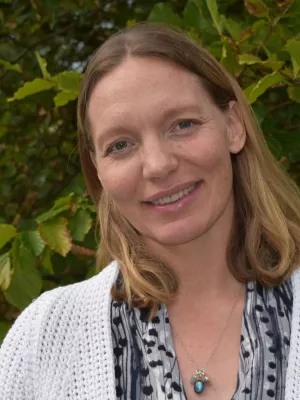
Marianne Hall
Research coordinator

Which are the most important parameters for modelling carbon assimilation in boreal Norway spruce under elevated [CO2] and temperature conditions?
Author
Summary, in English
Photosynthesis is highly responsive to environmental and physiological variables, including phenology, foliage nitrogen (N) content, atmospheric CO2 concentration ([CO2]), irradiation (Q), air temperature (T) and vapour pressure deficit (D). Each of these responses is likely to be modified by long-term changes in climatic conditions such as rising air temperature and [CO2]. When modelling photosynthesis under climatic changes, which parameters are then most important to calibrate for future conditions? To assess this, we used measurements of shoot carbon assimilation rates and microclimate conditions collected at Flakaliden, northern Sweden. Twelve 40-year-old Norway spruce trees were enclosed in whole-tree chambers and exposed to elevated [CO2] and elevated air temperature, separately and in combination. The treatments imposed were elevated temperature, +2.8 °C in July/August and +5.6 °C in December above ambient, and [CO2] (ambient CO2 ∼370 μ mol mol(-1), elevated CO2 ∼700 μ mol mol(-1)). The relative importance of parameterization of Q, T and D responses for effects on the photosynthetic rate, expressed on a projected needle area, and the annual shoot carbon uptake was quantified using an empirical shoot photosynthesis model, which was developed and fitted to the measurements. The functional form of the response curves was established using an artificial neural network. The [CO2] treatment increased annual shoot carbon (C) uptake by 50%. Most important was effects on the light response curve, with a 67% increase in light-saturated photosynthetic rate, and a 52% increase in the initial slope of the light response curve. An interactive effect of light saturated photosynthetic rate was found with foliage N status, but no interactive effect for high temperature and high CO2. The air temperature treatment increased the annual shoot C uptake by 44%. The most important parameter was the seasonality, with an elongation of the growing season by almost 4 weeks. The temperature response curve was almost flat over much of the temperature range. A shift in temperature optimum had thus an insignificant effect on modelled annual shoot C uptake. The combined temperature and [CO2] treatment resulted in a 74% increase in annual shoot C uptake compared with ambient conditions, with no clear interactive effects on parameter values.
Department/s
- MERGE: ModElling the Regional and Global Earth system
- BECC: Biodiversity and Ecosystem services in a Changing Climate
- Centre for Environmental and Climate Science (CEC)
Publishing year
2013
Language
English
Pages
1156-1176
Publication/Series
Tree Physiology
Volume
33
Issue
11
Document type
Journal article
Publisher
Oxford University Press
Topic
- Earth and Related Environmental Sciences
Status
Published
ISBN/ISSN/Other
- ISSN: 1758-4469